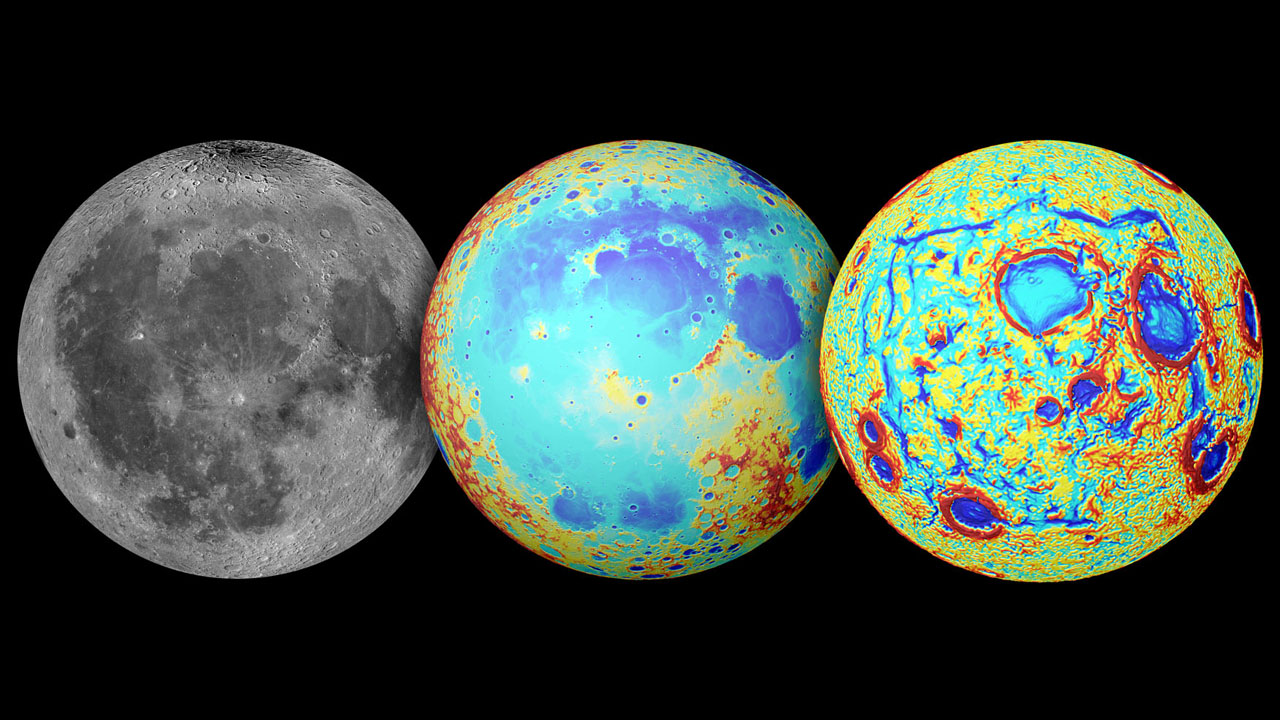A study based on data from the lunar GRAIL mission is putting many previous scientific theories about the surface of the Moon into question. Looking closely at its mares (“seas” filled with darker rock) suggests that the planet’s largest feature, Oceanus Procellarum, is the spot from which the planet shat all over itself and “fed magma into its other features.”
“The new information suggests that Oceanus Procellarum may be the one case where the Moon’s own internal heat drove massive volcanic eruptions,” ArsTechnica explains. “The authors propose that it’s similar to rift zones seen on Earth, where linear fractures get filled with magma that cools and contracts.”
The region features high levels of often radioactive potassium, phosphorus and rare-earth elements. It’s gravity is very uneven. It’s also less circular than other mares. It’s actually kind of square but “in a standard projection of the lunar surface, it appears as somewhat star-shaped.”
(Image: NASA/Colorado School of Mines/MIT/JPL/Goddard Space Flight Center)


